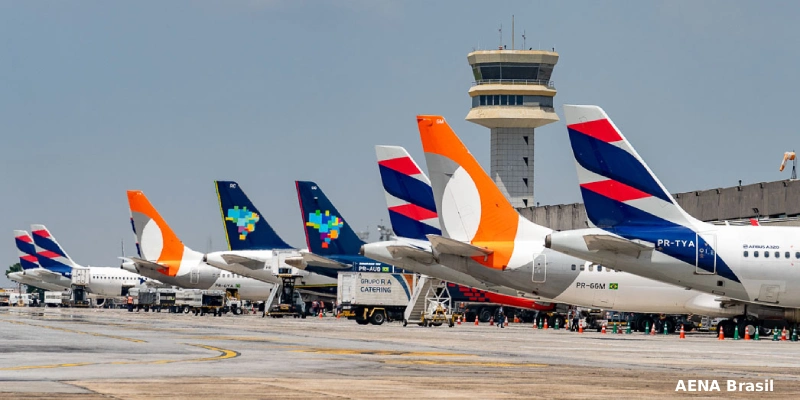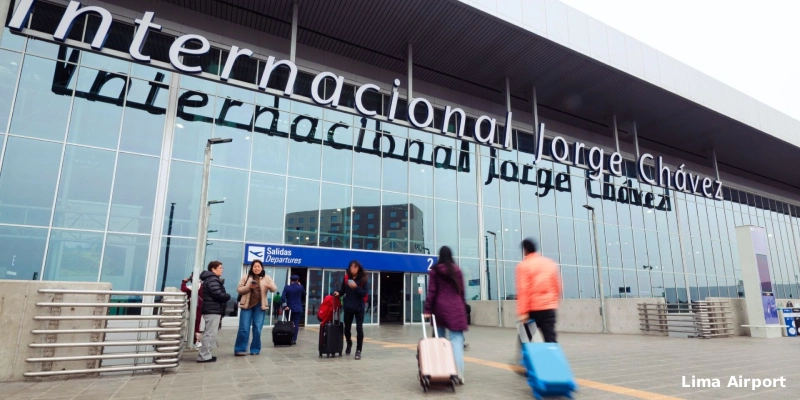The International Air Transport Association (IATA) released global air traffic results for May 2025, revealing a 5% increase in total passenger demand compared to the same month last year. This growth, measured in revenue passenger kilometers (RPK), was matched by a 5% rise in total capacity, measured in available seat kilometers (ASK). The global load factor stood at 83.4%, just 0.1 percentage points below May 2024.
Asia-Pacific Leads Global Growth
The Asia-Pacific region emerged as the fastest-growing, with an impressive 9.4% surge in demand and a 7.1% increase in capacity. Its load factor reached 83.8%, up 1.8 percentage points year-on-year. Airlines in this region also recorded a 13.3% growth in international flights, with an 84.0% load factor (+2.0 ppt), reflecting a strong and sustained recovery.
Latin America and Africa Show Dynamism
Latin America saw an 8.5% expansion in demand, though capacity grew even more (9.6%), causing the load factor to dip to 82.2% (-0.8 ppt). In the international segment, Latin American airlines experienced an 8.8% rise in demand and an 11.0% increase in capacity, with a load factor of 83.6%, down 1.7 percentage points from the previous year.
In Africa, total demand rose 7.5%, while capacity grew 4.6%, pushing the load factor to 75.3% (+2.0 ppt). For international flights, African carriers achieved a 9.5% demand increase, with capacity up 6.2%. The international load factor climbed 2.2 percentage points to 74.9%. Notably, the Africa-Asia corridor was the world’s fastest-growing, with a remarkable 15.9% surge.
→ Oita Becomes”Hello Kitty Airport”: Japan Bets on Kawaii Tourism for Expo 2025
Europe and Middle East Advance at Moderate Pace
Europe posted a 3.4% growth in total demand, against a 3.9% capacity increase, reducing its load factor to 84.7% (-0.4 ppt). On international routes, European airlines saw a 4.1% demand rise and a 4.8% capacity expansion, with a stable load factor of 84.0% (-0.6 ppt).
The Middle East recorded a 6.2% demand increase and a 6.7% capacity rise. Both total and international load factors remained steady at around 80.7% and 80.9%, respectively, with minimal year-on-year variations.
North America Bucks the Trend
Contrary to the global trend, North America reported a 0.5% decline in total passenger demand. While capacity rose 2.0%, the load factor dropped 2.1 percentage points to 83.4%. The downturn was primarily due to a 1.7% contraction in the U.S. domestic market, affected by economic slowdown and government travel restrictions. Internationally, growth was modest at 1.4%, with an 83.8% load factor (-0.3 ppt).
Domestic Market: Uneven Growth
Global domestic traffic grew 2.1%, with capacity expanding 2.8%. However, the load factor fell to 83.7% (-0.5 ppt). China’s market remained the growth engine, showing steady acceleration since March. Brazil also delivered solid performance, continuing a positive trend that began in January 2023.
Optimism for Northern Hemisphere Peak Season
Willie Walsh, IATA’s Director General, noted that despite regional disparities in growth, consumer confidence remains strong. Advanced bookings for the Northern Hemisphere summer season remain robust, a positive sign for the industry. Walsh also warned of geopolitical instability in regions like the Middle East and its potential impact on oil prices, which stayed low in May.
Despite challenges, the aviation industry remains on an upward trajectory, with positive results across nearly all regions and encouraging prospects for the coming months.
Related Topics
Congonhas Airport in São Paulo Receives Approval to Operate International Flights
ALTA Warns that Transfer TUUA Puts Peru’s Air Connectivity at Risk
Panama: Tocumen Airport Surpasses 19 Million Passengers by November, Cementing Its Regional Leadership in 2025
Lufthansa Reopens Its Lounge at Stuttgart Airport After Comprehensive Renovation

Un apasionado por la aviación, Fundador y CEO de Aviación al Día.




